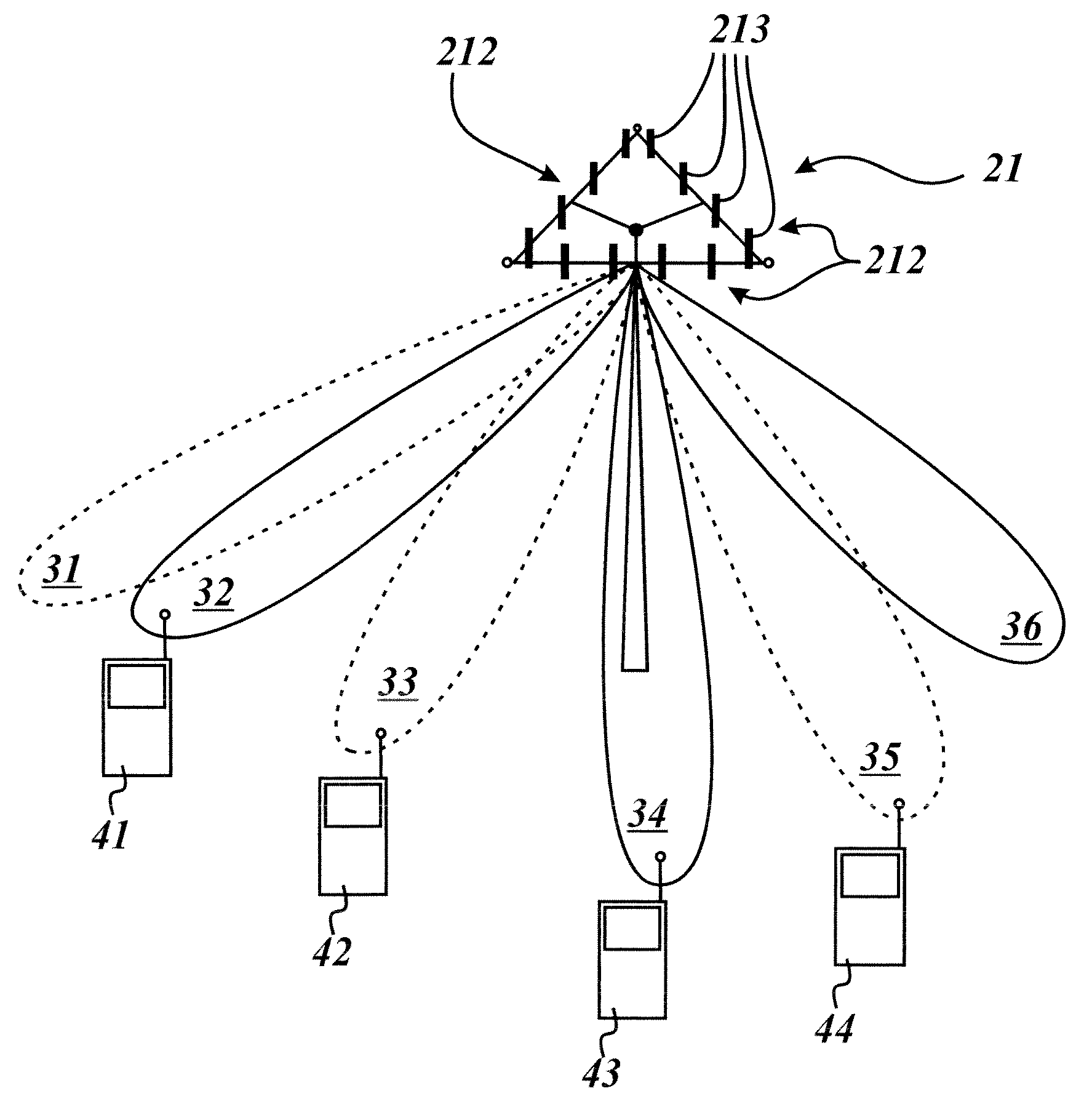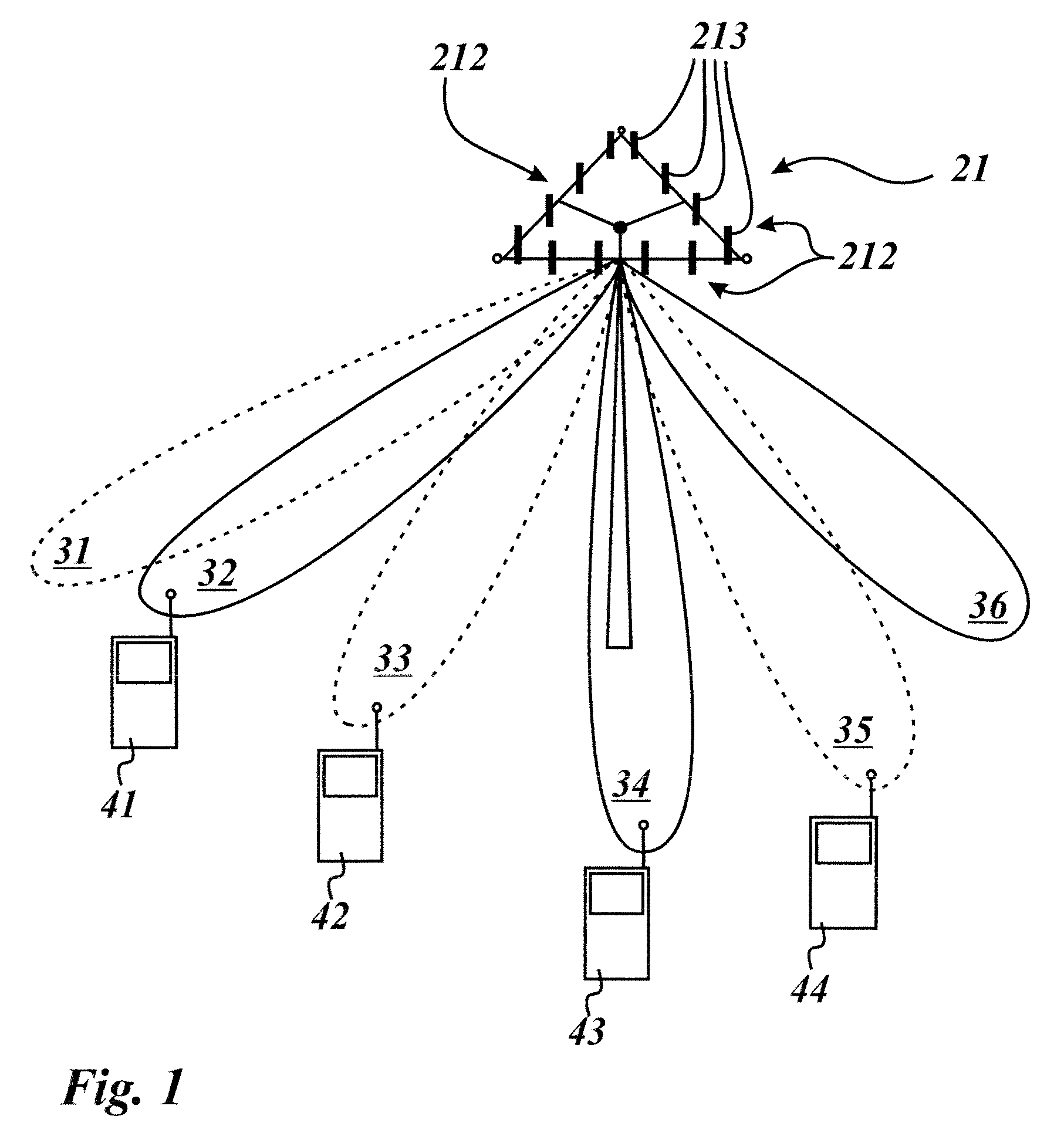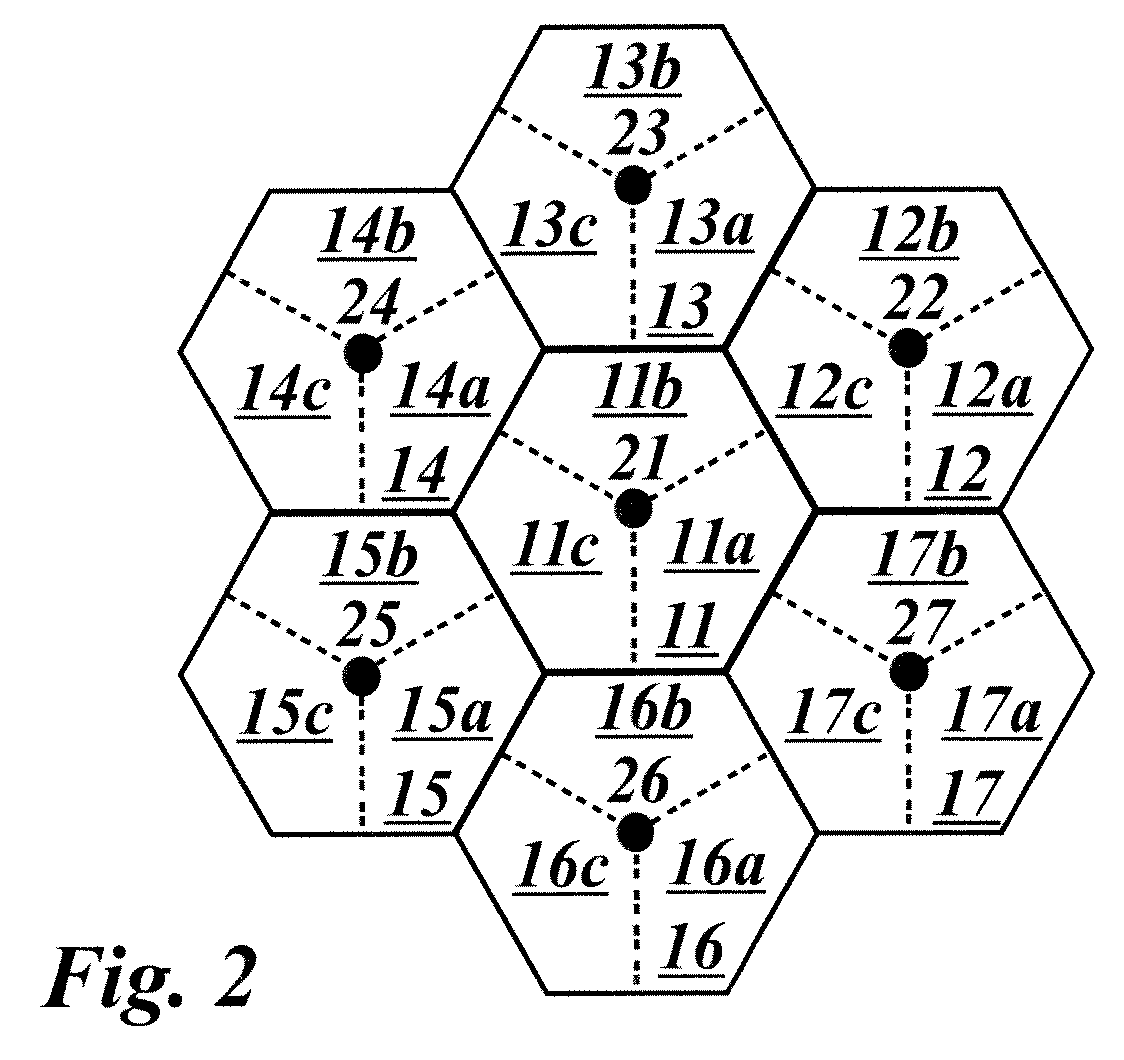Method of and base station for controlling beam forming in a mobile cellular network
a mobile cellular network and beam forming technology, applied in the field of mobile cellular networks, can solve the problems of unavoidable spatial interference and possible bandwidth problems, and achieve the effect of improving the beam forming in the mobile cellular network
- Summary
- Abstract
- Description
- Claims
- Application Information
AI Technical Summary
Benefits of technology
Problems solved by technology
Method used
Image
Examples
Embodiment Construction
[0030]FIG. 1 shows a base station 21 and four mobile units 41, 42, 43, 44 in one sector of a cell of a mobile cellular network. The base station 21 comprises three antenna units 212 wherein each of the antenna units 212 is assigned to a different sector of the cell. Each antenna unit 212 is formed of a linear antenna array with four equal linear antenna elements 213 arranged in parallel. The front antenna unit 212—in the following just called antenna unit 212—provides mobile cellular communication to the mobile units 41, 42, 43, 44 by means of beams 31, 32, 33, 34, 35, 36. The antenna unit 212 is able to apply the beams 31, 32, 33, 34, 35, 36 on the respective sector of the cell of the cellular mobile network under control of a control unit. Furthermore, the control unit of the base station 21 is adapted to execute the method of controlling beam forming in a mobile cellular network.
[0031]The control unit of the base station 21 is adapted to control the beam forming of the antenna un...
PUM
 Login to View More
Login to View More Abstract
Description
Claims
Application Information
 Login to View More
Login to View More - R&D
- Intellectual Property
- Life Sciences
- Materials
- Tech Scout
- Unparalleled Data Quality
- Higher Quality Content
- 60% Fewer Hallucinations
Browse by: Latest US Patents, China's latest patents, Technical Efficacy Thesaurus, Application Domain, Technology Topic, Popular Technical Reports.
© 2025 PatSnap. All rights reserved.Legal|Privacy policy|Modern Slavery Act Transparency Statement|Sitemap|About US| Contact US: help@patsnap.com



